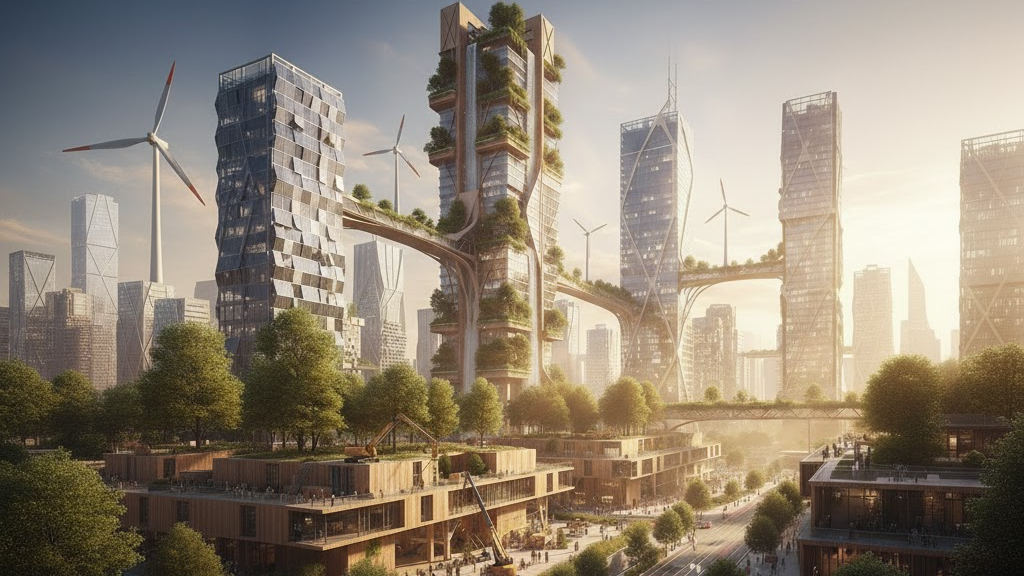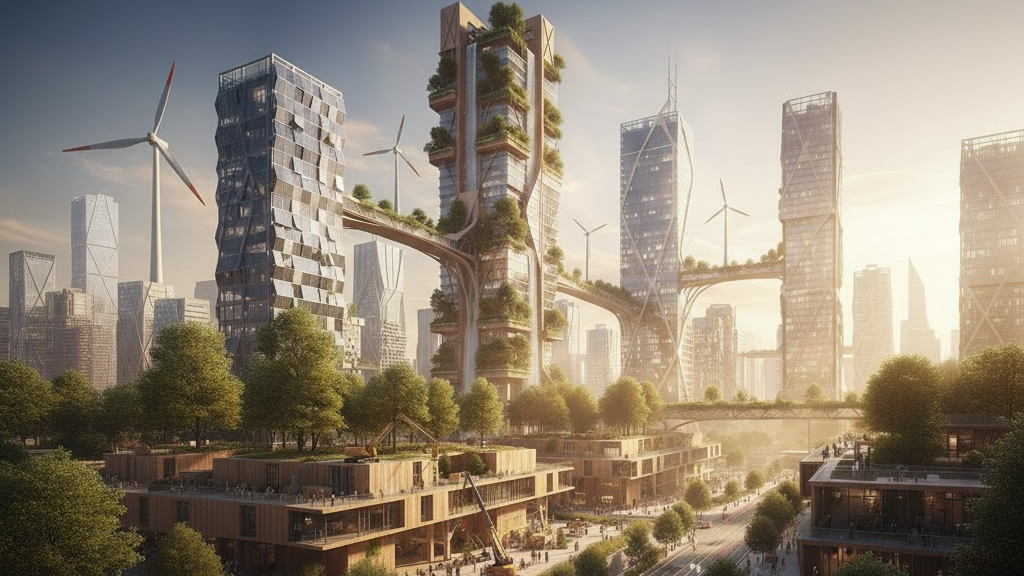
What is Sustainable Construction? Benefits and Considerations
News
Sustainable construction is not merely about “planting trees around buildings” or placing a green label on a project; it is a systematic approach aimed at reducing environmental impact, improving occupants’ quality of life, and optimizing costs throughout the building’s entire life cycle. This article explains the concept, outlines practical benefits, and analyzes key life-cycle considerations — with particular emphasis on the role of certifications such as LEED and EDGE in turning sustainability ambitions into reality.
What is sustainable construction? (overview and critical perspective)
Sustainable construction (sustainable building/green building) refers to the design, construction, and operation of buildings based on principles of energy efficiency, water conservation, greenhouse gas reduction, safe and environmentally friendly materials, while ensuring the health and comfort of occupants.
However, we must take a critical view: many so-called “green projects” focus only on reducing operational energy while ignoring embodied carbon from materials and construction — which can “shift” the problem rather than solve it. According to the World Green Building Council, the construction sector accounts for a significant portion of energy-related emissions; therefore, both operational and material-related emissions must be addressed comprehensively.
Benefits of sustainable construction
Reducing energy consumption and operating costs: green buildings typically feature efficient mechanical systems, high-performance building envelopes, and renewable energy solutions, resulting in lower long-term operating costs.
Improving occupant health and productivity: better indoor air quality, proper lighting, and well-designed thermal comfort contribute to higher productivity and reduced illnesses related to indoor environments. Numerous studies show a link between indoor air quality and cognitive performance.
Lower financial risks and increased property liquidity: green-certified buildings often attract tenants more easily, achieve higher rental rates, and gain access to green financing or tax incentives.
Brand value and ESG compliance: for developers and investors, green buildings demonstrate sustainability commitments, supporting ESG reporting and investor relations.

Life-cycle considerations that cannot be overlooked
For a building to be truly “sustainable,” it must be assessed across its whole life cycle — from raw material extraction, manufacturing, transportation, construction, operation, maintenance, to demolition and recycling.
Embodied carbon (emissions from materials & construction): this represents a significant portion even before the building begins operation. If operational energy is optimized but high-carbon materials (concrete, steel) are used, total life-cycle emissions remain high. Therefore, reducing embodied carbon (using recycled materials, localizing supply chains, designing with less material) is essential.
Operational carbon (emissions during building use): associated with energy consumption for cooling/heating/lighting. Strategies include high-performance envelopes, daylighting design, efficient HVAC, and renewable energy. However, a holistic view is needed — sometimes operational optimization is more costly than reducing embodied carbon, so balance is key.
Life Cycle Assessment (LCA): a tool used to quantify environmental impacts across all stages of a building’s life. Many certification systems now award points for implementing LCA. Using LCA from early design stages helps guide informed material decisions.
Adaptive reuse: retaining existing structures instead of demolition and reconstruction is often the most effective way to reduce embodied carbon while preserving cultural and economic value.
LEED and EDGE certifications — roles, differences, and practical guidance
LEED: a globally recognized, comprehensive rating system evaluating energy, water, materials, indoor environmental quality, location, and transportation. LEED suits projects seeking holistic sustainability branding and willing to invest in thorough certification processes.
EDGE: focuses on efficiency in energy, water, and materials, aiming to simplify costs and shorten certification timelines. EDGE is ideal for emerging markets and cost-optimized projects. Its software helps identify cost-effective resource-saving solutions.
Practical guidance:
Start early: sustainability is most effective when integrated from the pre-design stage. Both LEED and EDGE recommend early energy modeling and LCA.
Engage experts: hire LEED/EDGE consultants and LCA/commissioning specialists to avoid documentation errors and optimize points.
Prioritize solutions with strong payback: solar systems, LED lighting, and water-efficient fixtures often offer attractive returns, whereas some premium “green” materials may require careful evaluation.
Never trade health for green points: choose safe material standards, control VOCs, and ensure excellent indoor air quality — long-term value for occupants always comes first.
Conclusion and recommendations
A truly “sustainable building” is the result of life-cycle thinking: reducing embodied carbon, optimizing operational carbon, protecting occupant health, and applying adaptive reuse strategies when possible. Certifications such as LEED and EDGE are valuable tools — but not the final destination; what matters most is data-driven design and management decisions (LCA, energy modeling, IAQ data) implemented from the earliest stages.
For developers: invest in timely consultancy, prioritize life-cycle-impactful yet cost-effective solutions, and select the certification that aligns with financial strategy and brand positioning. Doing so delivers environmental, human, and economic benefits.
- Posted on
- January 17, 2023

